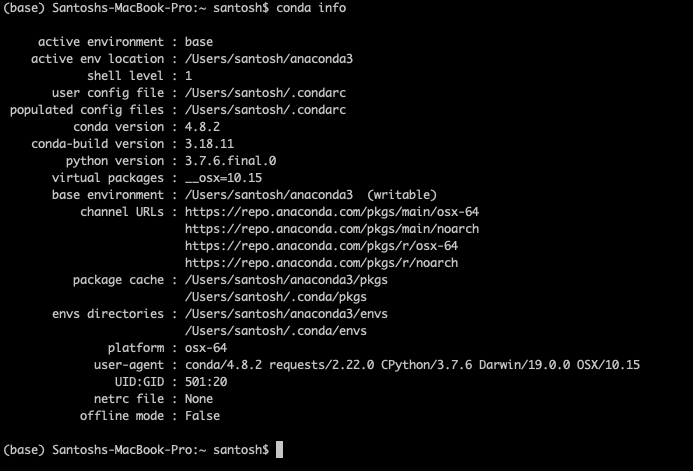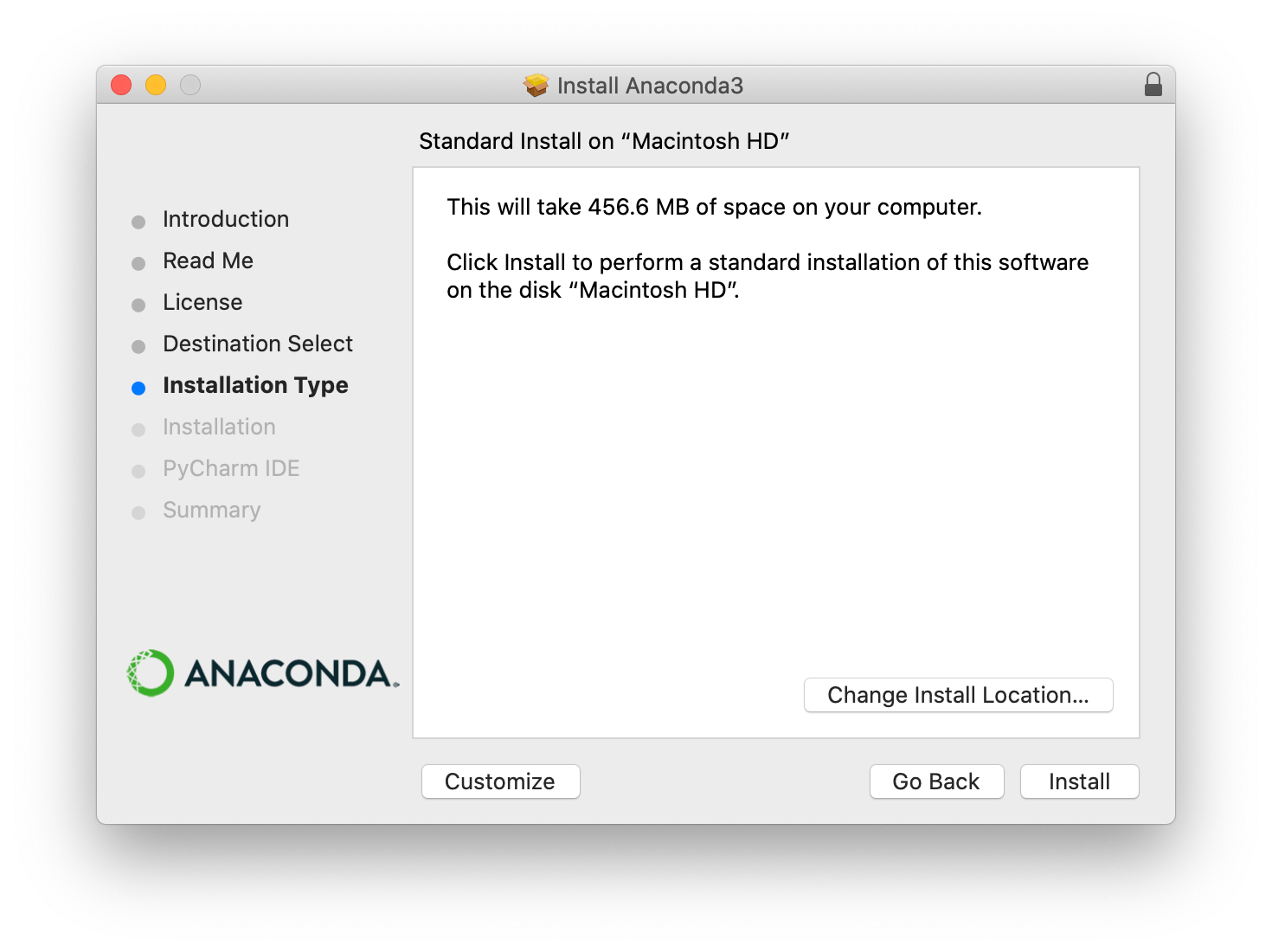

- INSTALL ANACONDA FOR MAC HOW TO
- INSTALL ANACONDA FOR MAC MAC OS
- INSTALL ANACONDA FOR MAC INSTALL
- INSTALL ANACONDA FOR MAC DOWNLOAD
Unwilling to give up, I uninstalled Anaconda and then tried the command-line installation. It worked fine as an application, but it just wouldn’t work with my terminal.
INSTALL ANACONDA FOR MAC DOWNLOAD
The first time I decided to download Anaconda, I went through the normal graphical Mac installation. The official installation guide is here if you feel like checking it out. No one else should have to go through that. You can see everything that I did to make my terminal awesome here, but essentially, it’s running After spending some time working in the terminal, I had turned it into something that was fast, efficient, and also very nice to look at. I work on a MacOS (Mojave, if you’re interested). But none of them make any sense when it’s all new! Just Googling your questions can be challenging. As you start to understand more of the language and commands that you need to make things work, you’ll find that there are plenty of simple answers out there. It’s not an easy thing to get started in machine learning and artificial intelligence, and being unable to get the necessary tools correctly installed is just crippling. There’s nothing more frustrating than not even being able to open the program that you need. There’s no handy link sitting there that will tell you what to do. Note: you might be prompted a bit different to this, it doesn’t matter just hit Enter, Anaconda will do the best for you.“Conda” didn’t work the first time I installed it. conda create -n yolov3_tf2 python=3.7Īfter that, you will be prompted something like this, just type ‘ y‘ and then hit the Enter. Just type or copy the following command to your Anaconda prompt and hit Enter.

Open Anaconda prompt, and create a new environment called yolov3_tf2 ( I gave this name because it relates to my next article about the implementation of YOLOv3 in TensorFlow 2.0). Now, we’re going to create our first environment, but be sure that you’ve installed Anaconda on your computer.
INSTALL ANACONDA FOR MAC HOW TO
(Note: For more details on how to use Anaconda, you can visit the Anaconda user guide here). I will let you explore it, but anyhow, if you have any problem, you can simply post a comment in the comment section and I will try to do my best for you.
INSTALL ANACONDA FOR MAC INSTALL
Go ahead and choose the appropriate version, follow the instructions and install it. Instead, the default Python used by your programs will be the one that comes with Anaconda. In case you have already installed Python on your computer, don’t worry, it won’t ruin anything. If you need, you can easily install Python 2.7 versions later. I suggest you choose the Python version 3.7 64-bit installer if you have a 64-bit machine, otherwise choose the 32-bit installer, instead.
INSTALL ANACONDA FOR MAC MAC OS
Installing AnacondaĪnaconda is available for Windows, Mac OS X, and Linux, you can find the installation file in the anaconda official site. If we want to use a different Python version or package libraries, just create a different environment and play around without any risk of crashing the system library. This can save time and energy for other things.Īnaconda can be used across different platforms, Windows, macOS, and Linux. So, we no need to worry about the system library or anything like that.

Installing Anaconda meaning installing Python with some commonly used libraries such as Numpy, Pandas, Scrip, and Matplotlib.įor a Python developer or a data science researcher, using Anaconda has a lot of advantages, such as independently installing/updating packages without ruining the system. It comes with many useful built-in third-party libraries. What is Anaconda and why I recommend it?Īnaconda is a Python-based data processing built for data science. Here, I’m going to show you how to install TensorFlow 2.0 in Anaconda. That’s way, TensorFlow 2.0 is more friendly than the older version 1.x.įor those of you who don’t have prior experience with this topic, this post is special for you. We can now easily debug TensorFlow’s variables and print their values just like in the standard Python. With eager execution by default and tight integration with Keras, now TensorFlow 2.0 makes the development of machine learning applications much easier than before. In September last year, 2019, Google finally announced the availability of the final release of TensorFlow 2.0. It has been used in many different fields of applications including handwritten digit classification, image recognition, object detection, word embeddings, and natural language processing (NLP). TensorFlow is still one of the popular Deep learning frameworks.


 0 kommentar(er)
0 kommentar(er)
